Contact UsCONTACT
Please feel free to contact us if you have any questions or concerns.
Inquiry FormStories
STORIES
SERIES EMBARK
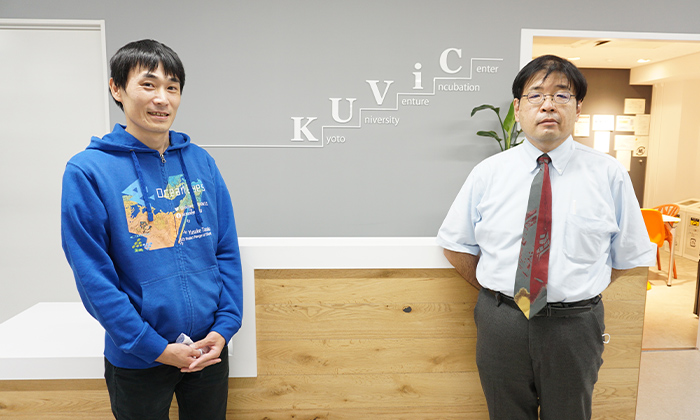
The fisheries and fishery industry is currently undergoing major changes. The global trend is toward "managed fisheries," based on the idea that marine resources are finite, with the aim of achieving sustainable fisheries, and efforts to achieve this have begun in Japan as well. Ocean Eyes Co., Ltd. was established with the goal of creating a system for sustainable fishing and fisheries. The company has already started operating "SEAoME," a contract-based service that meets the needs of marine and fishery operators, and "Fishery Navi," a service that allows fishermen to pull up information on sea conditions and fishing ground forecasts from their tablets at their operation sites. We interviewed Yusuke Tanaka, CEO, and Hidekazu Kasahara, director (special lecturer at Kyoto University's Academic Center for Computing and Media Studies), about their various challenges to realize sustainable fisheries. (Interviewer: Mae Kori)
Since 2010, I have been working on a research project under the Research Promotion Program for Climate Change Adaptation (RECCA) on red squid with the aim of estimating changes in fishing grounds and fishery resources due to global warming and providing information necessary for adaptation measures. Later, as a representative of JAMSTEC, I participated in a research project titled "Establishment of Sustainable Fishery Conservation through FISH TECH," which was sponsored by the Japan Agency for Marine-Earth Science and Technology (JAMSTEC) and Kyoto University's CREST (Japan Science and Technology Agency [JST]'s strategic research promotion program). This led me to start my own business. First, I worked on the social implementation of RECCA's research results at JAMSTEC, but it was quite a challenge.
Social implementation means that the research results will be used by the general public, including fishermen, and will actually be useful to society, but this requires various procedures such as technology transfer and licensing. To achieve this, we need to transfer technology, licenses, and other procedures. Companies and institutions with technological or academic backgrounds are essential, but it was difficult to find existing companies that would accept the technologies and themes we are trying to implement in CREST.
We decided that we had no choice but to create a place to receive the results ourselves, and on April 1, 2019, we ourselves started our own business. After actually starting our own business, we have realized that the implementation of research results by our own hands is an important issue that researchers themselves should be involved in in the future. I believe that researchers will be required to have the ability to think and practice in order to further expand their research, rather than just doing research and that being the end of it.
I myself have been in the research field all my life, so making the decision to become president was the hardest thing I had to do (laughs). I was quite worried about whether I was really the right person for the job, but I decided to take on the challenge, thinking that if I could work with a management and business professional like Mr. Kasahara....
The most difficult part of the practical side of the project was team building. It is difficult to gather people who understand that we are a research-based start-up, including development staff for implementation, marketing, finance, human resources, and so on. I think it will become increasingly necessary in the future to train people with skills for implementation, such as product managers who can "turn" new technologies into "products" that can be delivered to users as "services.
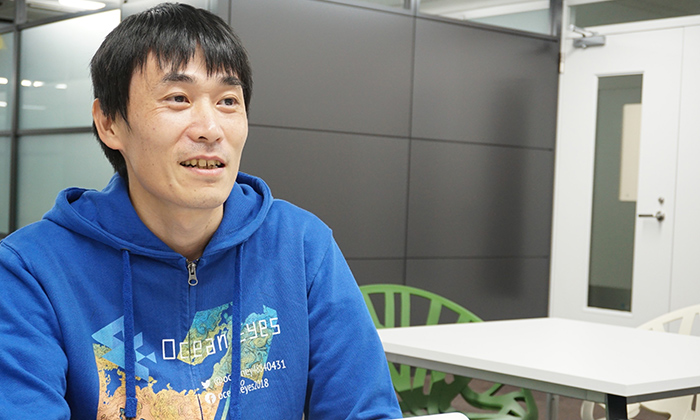
The biggest advantage is that we can directly link research results to product development within our company. We can commercialize the product, feed the issues back to the research, and then feed the research results back to the product once again. It is most interesting and rewarding to be able to work directly on such a project, with the R&D team and the implementation team working hand in hand.
I believe that our greatest strength is our ability to enter the market with newly developed technologies that are not yet available anywhere else. There are very few public institutions or private companies in the world that can provide detailed oceanographic data, including sea temperatures and currents, and we are one of them.
First, "Fishing Site Navi" supplements seawater surface temperature data from the Himawari weather satellite with deep learning to provide fishermen and other users with quasi-real-time information on sea conditions with no missing data due to clouds. Fishermen can take the tablet on board and use the latest data to decide where to fish. SEAoME" is a more broadly targeted, contract-based service for fisheries and marine engineering companies, providing time-series forecasts for specific locations and seamless marine environmental information from the coast to the open ocean, including red tide and storm surge.
The movement of ocean currents, such as the Kuroshio Current, is directly related to very important information for fishermen, such as "Where can I find fish? For example, the area off the coast of Sanriku, where the Kuroshio and Oyashio meet, is known as a good fishing ground. For example, the ocean currents create good fishing grounds, as the area off Sanriku where the Kuroshio and Oyashio collide is known as a good fishing ground. We would also like to actively provide useful data for aquaculture fisheries. Our major mission is to provide users with information that meets the needs of fishermen, with improved accuracy and in a timely manner.
In the future, the fishing industry will shift from "catch as much as you can" to "catch a predetermined amount of fish efficiently," and a shift from fishing that relies on the "intuition and experience" of veteran fishermen to efficient fishing that makes use of data will be required at the same time, so the need for "Fishery Navi" and "SEAoME" should increase. Therefore, the need for "Fisheries Navi" and "SEAoME" should continue to increase.
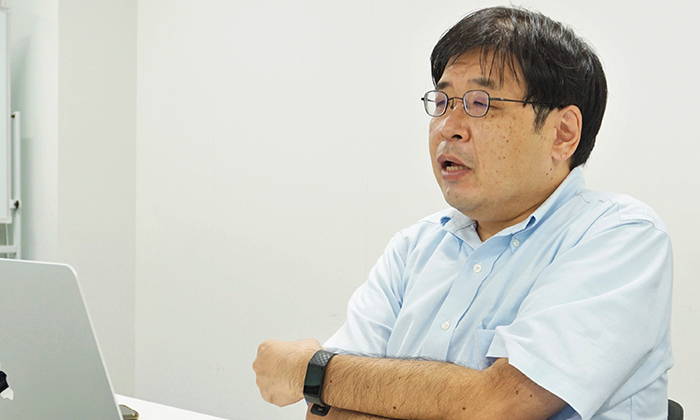
In the future, we would like to actively expand our business overseas. The area covered by the Himawari meteorological satellite is from ASEAN countries to Oceania, so we would like to focus on this area first. We would like to quickly establish a system for developing solutions for both domestic and overseas markets. At the same time, I would like to make a strong effort in sales and PR activities so that we can increase revenue as soon as possible.
We are already working on developing a system to expand the target area so that it can be useful for pelagic vessels, as well as technology to predict fishing grounds for specific fish species. Fishermen who look at the ocean to catch fish in the field and we, who look at the ocean as a research subject, see the same ocean but from completely different perspectives. We cannot see beneath the surface of the ocean, but I think there is incredible potential in this invisible world. I am convinced that by successfully combining the two perspectives of fishermen and researchers, we can explore new ideas.
The world of marine fisheries is still an under-recognized market, and we are most grateful for the investment at the seed stage. We are also very grateful for the mentor-like function of the company, which has been very accurate and reassuring.
What is now required for any research project is an "exit strategy. It is not as easy as one might think to implement the results of research into society, but for this reason, researchers should have a solid exit strategy, and I would like them to consider the option of starting their own business. It would be good to become someone who "understands technology and understands management," and it would also be good to seek out colleagues who have their own areas of expertise from a young age. If you have a world you love and something to aim for, starting a business is a shortcut to realizing your dreams. I encourage you to take on this challenge.
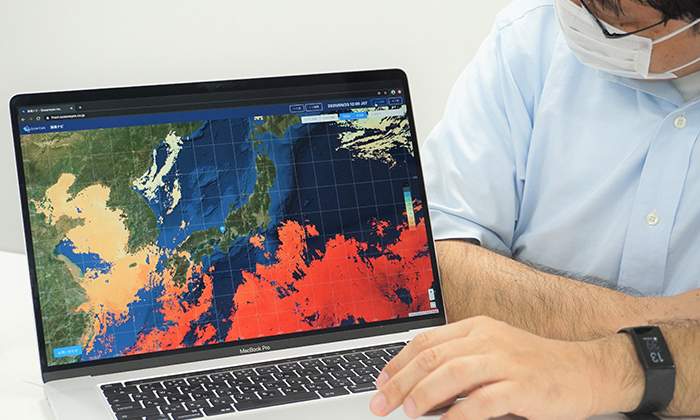
(Interviewed in September 2020. Affiliations, positions, etc. are as of the time of the interview)
Researchers collaborating in the different fields of machine learning and physical simulation have joined forces to launch a start-up company.
From the interview, we can see that they are having a hard time managing their business, but the way they are discussing management issues in the same atmosphere of discussions in research is exactly like a good management team of a start-up company!
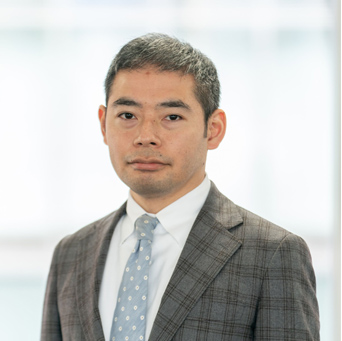
Kenichi Yotsumoto

Ocean Eyes Co., Ltd.
Please feel free to contact us if you have any questions or concerns.
Inquiry Form